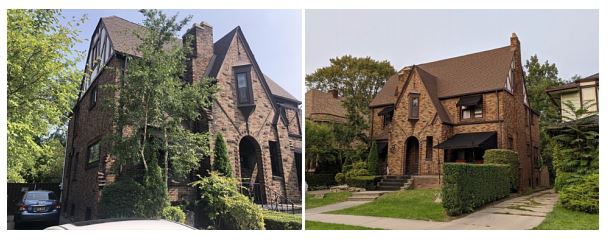The proposed rear addition will be clad with brick and stucco on the side facades in a similar style to the original, with brickwork around the windows of the original building to be replicated on the north side of the addition (see Appendix C). The proposed traditional matching design on the addition is strongly encouraged but not a requirement of this heritage process. The incorporation of traditional materials and its location as a rear addition with limited views from Askin Avenue will make the addition less noticeable.

Front elevation views of subject property from Askin Avenue.
Ontario Regulation 9/06 contains criteria for determining cultural heritage value or interest when reviewing if a site is a good candidate for designation under Section 29 of the Ontario Heritage Act. The regulation speaks to three broad categories: design value or physical value, historical value or associative value, and contextual value.
436 Askin, with its steeply pitched cross-gabled roof, prominent chimney, oriel window, arched doorway, and decorative half-timbering at sides, is an example of Picturesque English Revival style (a variant of the more typical Tudor Revival style), and has physical/design value.
According to City records and historical research provided by the applicant, the existing building was constructed in 1929 by Edward and Louise Griffith, who purchased the property in Oct. 1926 for $2500 and was a long-time owner, selling 436 Askin in Nov. 1951 for $21000. Edward Griffith was an insurance salesman and mason who passed away in August 1978.